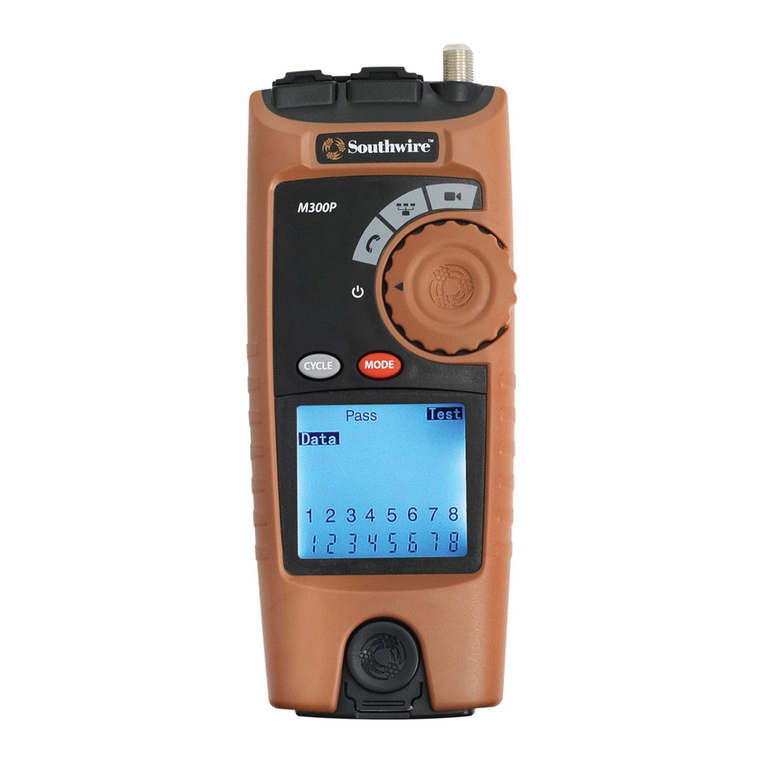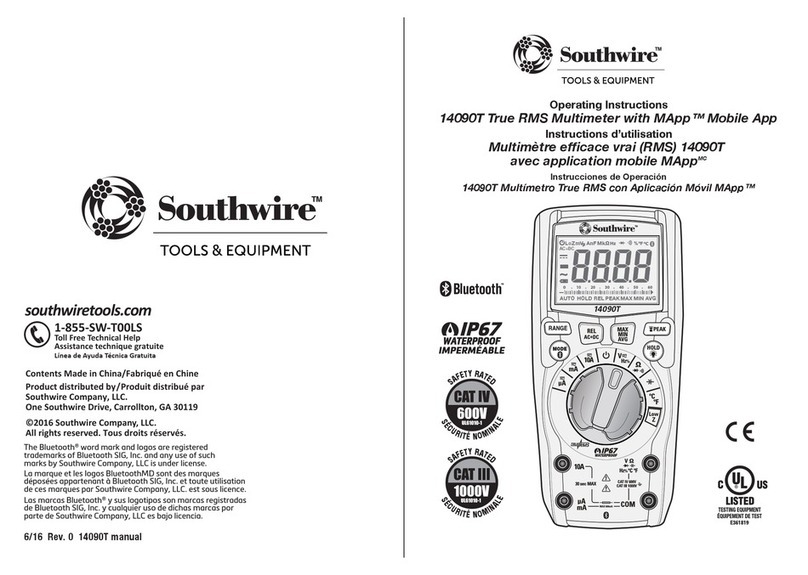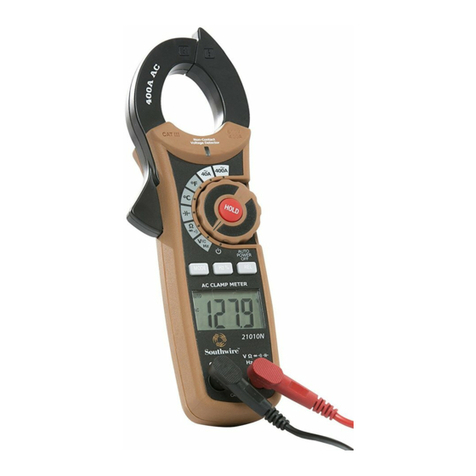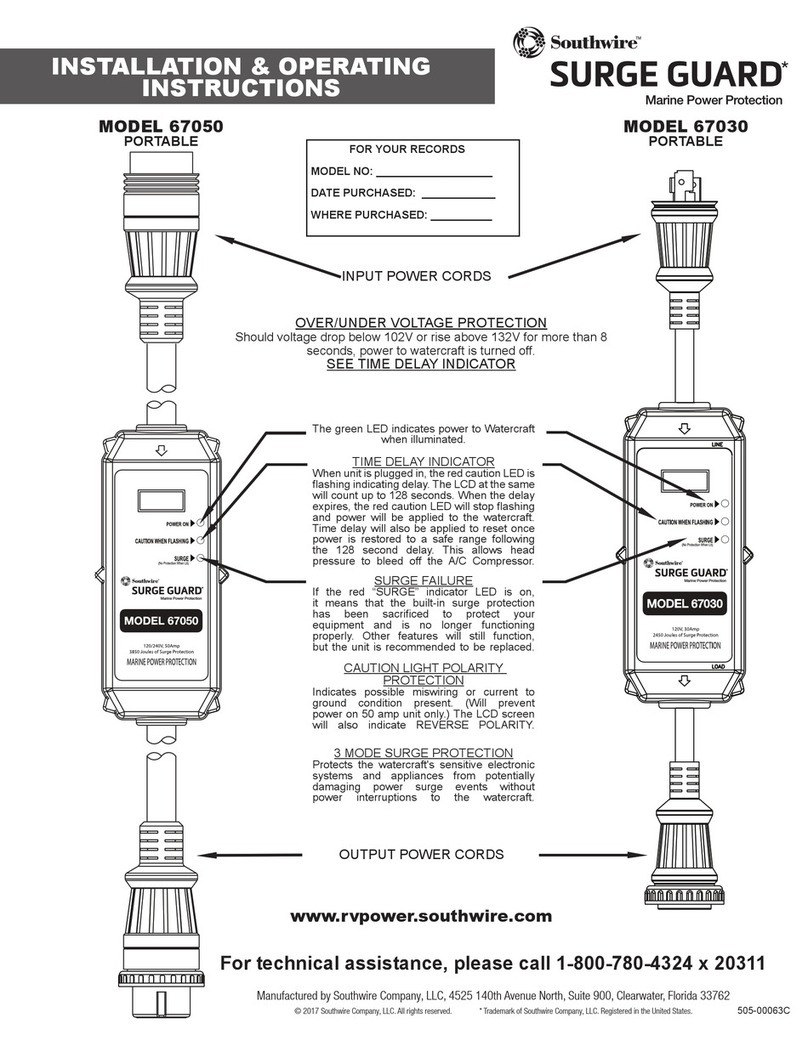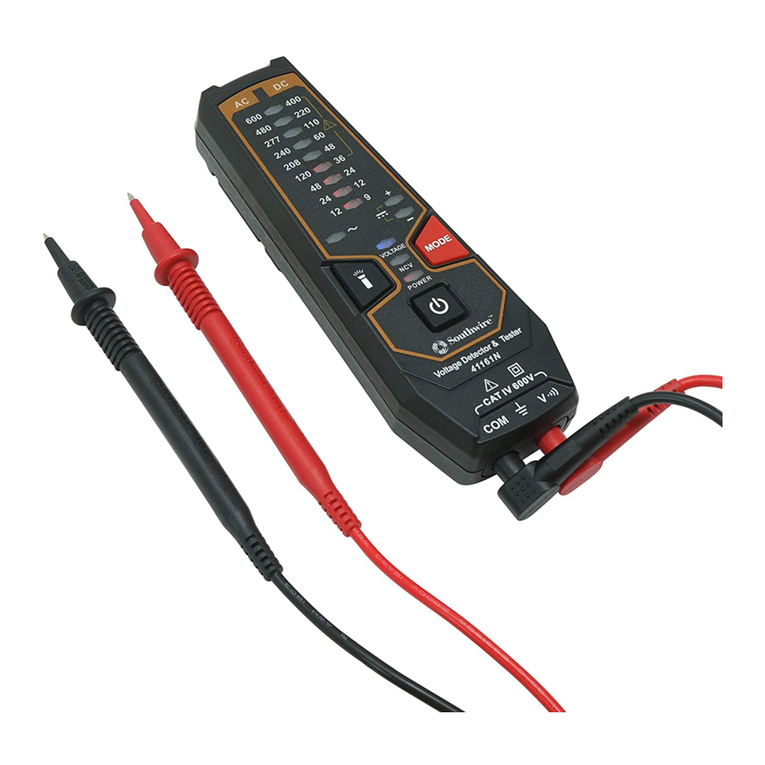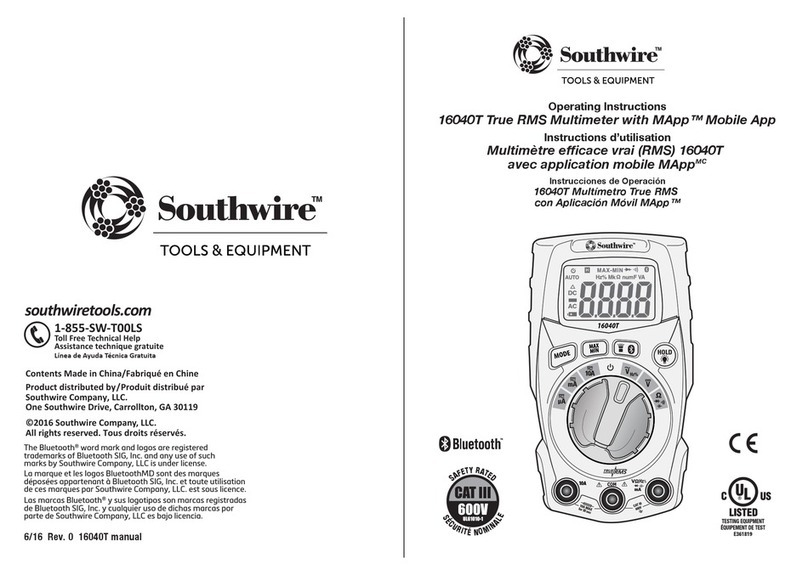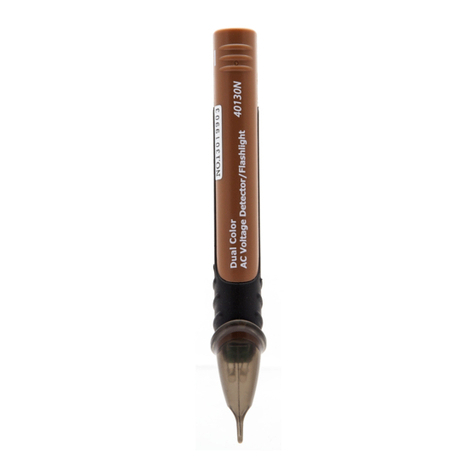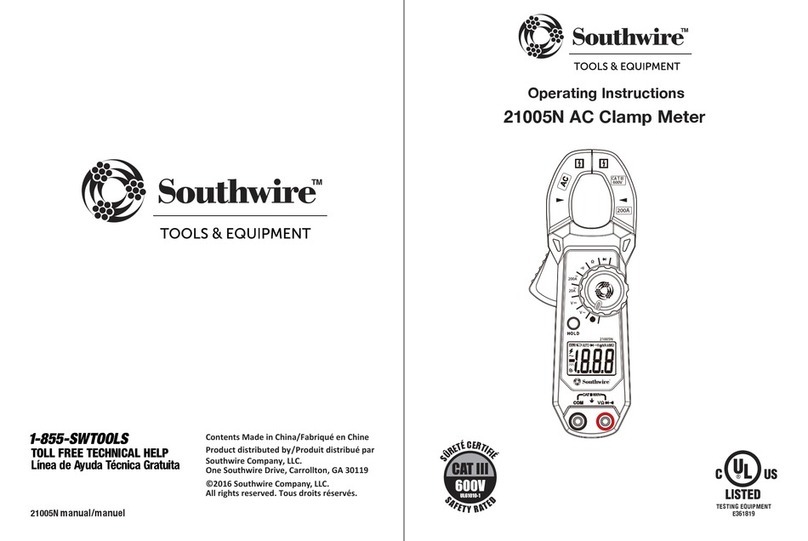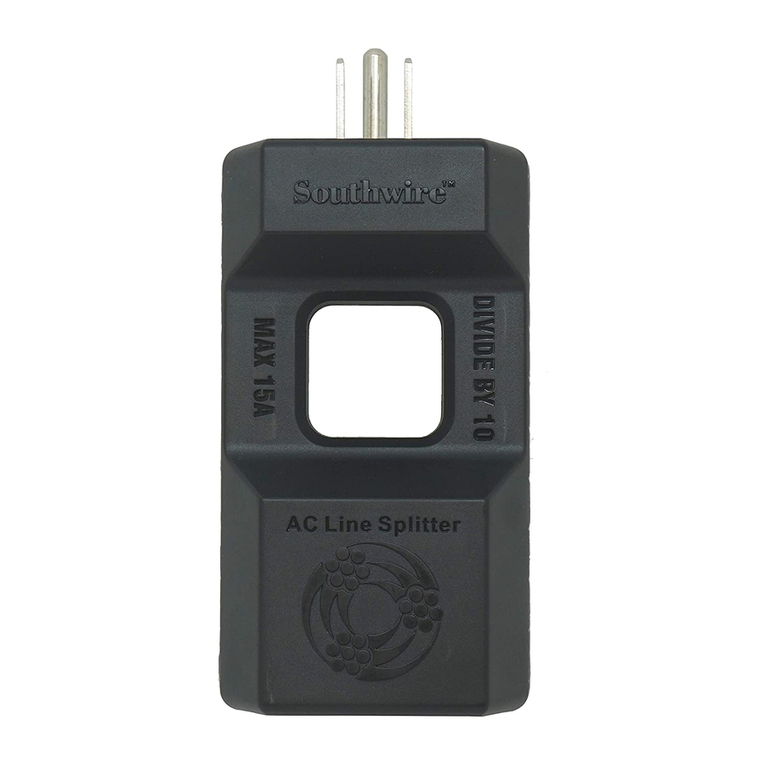13
Specifications
600.00AAC
1000.0AAC
600.00AAC
1000.0AAC
600.0ADC
1000ADC
600.0mVDC
6.000VDC
60.00VDC
600.0VDC
6.000VAC
60.00VAC
600.0VAC
600.0Ω
6.000kΩ
60.00KΩ
600.0KΩ
6.000MΩ
60.00MΩ
40.00nF
400.0nF
4.000µF
40.00µF
400.0µF
4000µF
10-10kHz
Sensitivity: 15V RMS
0.5 to 99.0%
Pulse width: 100µs to 100ms
Frequency: 10Hz to 150kHz;
Sensitivity: 10V RMS min.
-20.0 to 760.0°C
-4.0 to 1400.0°F
± (2.8 % + 8 digits)
± (3.0 % + 8 digits)
± (5.0 % + 10 digits)
± (5.0 % + 10 digits)
± (2.8% + 5 digits)
± (3.0% + 5 digits)
± (0.8% + 2 digits)
± (1.5 % + 2 digits)
± (1.8% + 8 digits)
± (1.0% + 4 digits)
± (1.5% + 2 digits)
± (2.5% + 3 digits)
± (3.5% + 5 digits)
±(4.0% + 20 digits)
±(3% + 5 digits)
±(4.0% + 10 digits)
±(5.0% + 10 digits)
±(1.5% + 2 digits)
±(1.2% + 2 digits)
± (3% + 5°C)
± (3% + 9°F)
Function Range & Resolution Accuracy (% of reading)
AC Current (50/60Hz)
AC Current (400Hz)
DC Current
DC Voltage
AC Voltage (50-400Hz)
Resistance
Capacitance
Frequency
Duty Cycle
Temp (type-K)
(probe accuracy not included)
All AC voltage ranges are specified
from 5% of range to 100% of range
All AC current ranges are specified
from 5% of range to 100% of range
All AC current ranges are specified
from 5% of range to 100% of range
14
REGISTER YOUR PRODUCT
Register your product purchase at www.southwiretools.com or by scanning
the QR code on this manual. At Southwire, we are dedicated to providing you
with the best customer experience. By following a few quick steps to register,
you can experience quicker service, more efficient support, and receive
information on our future products. Simply provide your model number,
serial number, and just a few pieces of information about yourself –
it is that quick and easy.
LIMITED WARRANTY AND LIMITATION OF LIABILITY ON
SOUTHWIRE METERS & TESTERS
Southwire Company, LLC warrants this product to be free from defects in
material and workmanship for two years from the date of purchase. This
warranty does not cover fuses, disposable batteries, or damage arising from
an accident, neglect, misapplication, contamination, modification, improper
maintenance or repair, operation outside of specifications, or abnormal
handling of the product.
Southwire’s sole liability, and the purchaser’s
exclusive remedy, for any breach of this warranty is expressly limited to
Southwire’s repair or replacement of the product. Whether Southwire repairs
or replaces the product will be a determination that Southwire makes at its
sole discretion.
SOUTHWIRE MAKES NO WARRANTY THAT THE PRODUCT WILL
BE MERCHANTABLE OR FIT FOR ANY PARTICULAR PURPOSE.
SOUTHWIRE MAKES NO OTHER WARRANTY, EXPRESSED OR
IMPLIED, OTHER THAN THE WARRANTY SPECIFICALLY SET FORTH
HEREIN.
SOUTHWIRE WILL NOT BE LIABLE FOR ANY INCIDENTAL,
CONSEQUENTIAL, INDIRECT, SPECIAL, OR PUNITIVE DAMAGES FOR
ANY BREACH OF THIS WARRANTY.
This warranty is void if this product is used for rental purposes. No product
reseller is authorized to extend any other warranty on Southwire’s behalf
relating to this product, and no such reseller warranty will be binding on
Southwire. If you have a warranty claim, or if the product needs to be
serviced during or after the warranty period set forth above, please contact
the Customer Service Department at 855-SWTOOLS (855-798-6657).
The sender is responsible for all shipping, freight, insurance, and packaging
costs associated with sending a product to Southwire. Southwire will not be
responsible for lost or damaged products returned pursuant to this warranty.
All products returned to Southwire under this warranty should be mailed to:
Southwire Company, LLC
Attention: Tool Warranty Return
840 Old Bremen Road
Carrollton, GA 30117

